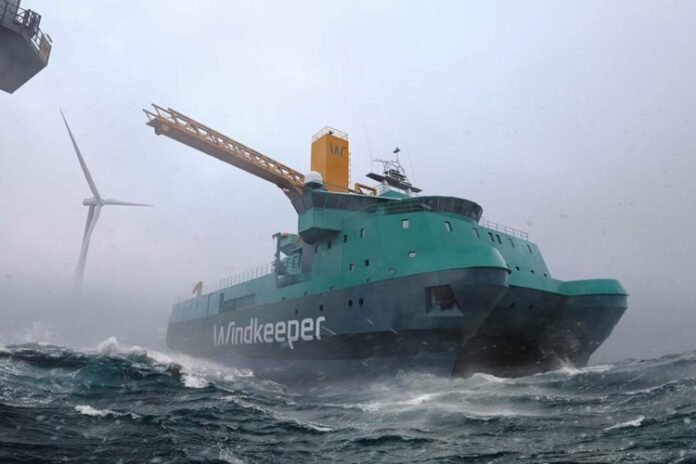Cemre Shipyard has awarded Norwegian Electric Systems a contract to deliver energy design, and smart control systems for two “Windkeeper” service operations vessels (SOV) that the Turkish shipyard is building for GC Rieber Shipping.
NES’ scope of work is to manage the complete energy design plus act as a system integrator for the vessels’ power system and smart control set-up. NES will supply frequency converters and electric motors for the propulsion system, battery system, transformers, main DC and AC switchboards, integrated automation system, Raven INS integrated navigation system and dynamic positioning system.
“The primary purpose of tailoring the vessels’ energy design and smart control system is to meet the vessels’ strict requirements for redundancy, and in an extension of this optimised energy efficiency. In turn, this translates directly to lower operating costs and emissions to air,” says sales manager at NES, Egil Bremnes
The unique vessel design requires a power system topology that has a high number of redundancy zones. NES and the GC Rieber team have developed a game-changing energy design that can be operated with a minimum of engines running. The degree of safety, in combination with minimum fuel consumption, is achieved by using the NES portfolio of products, such as ESS, Quadro Master, Odin’s eye, Raven INS and smart control.
“These are highly innovative vessels, and we are delighted that Cemre Shipyard and GC Rieber Shipping have trusted NES with the task of making them as energy efficient as possible. It has been a privilege to work with both GC Rieber and Cemre on this delivery. Two highly competent companies with equal competent project teams,” Bremnes adds.
The Windkeeper SOVs are based on a small waterplane area twin hull (SWATH) methodology, and design, which offers the offshore wind market improved operability, ultra-low fuel consumption, and the option of fully electric operations in the field.
NES will design, assemble, and test the systems at its headquarters at Godvik outside Bergen, Norway. The company’s facilities in Egersund and Ålesund, Norway, will also support the project. Delivery of the equipment is planned for the beginning of 2024.



